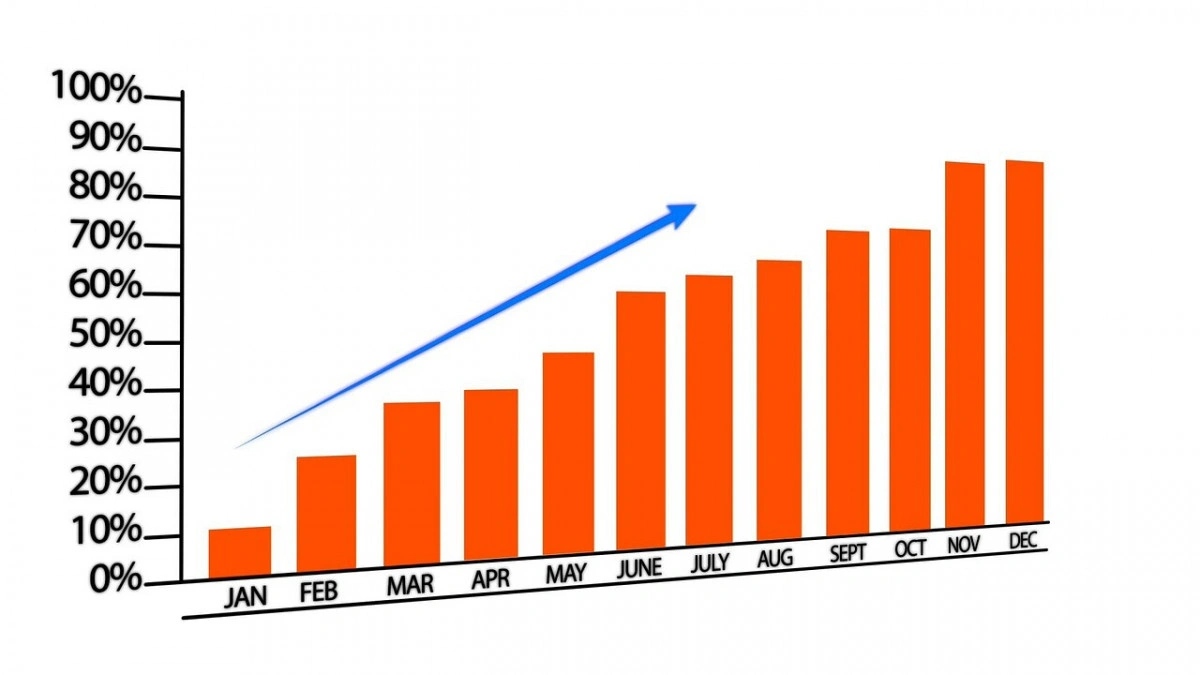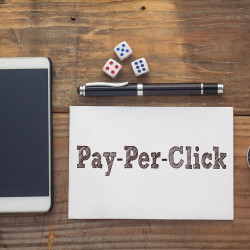When measuring performance, this is where Key Performance Indicators (KPIs) come into play. KPIs are measurable aspects that can tell you how well (or poorly) something is running. The KPIs you choose to measure will depend on your business and the outcomes you're hoping to achieve.
To help you decide which KPIs you should be tracking, we've compiled a list of 10 KPIs and how you can use them to see how your marketing is performing.
1. Customer Acquisition Cost (CAC)

While this sounds like a fancy term, it's just marketing speak for how much money it takes to turn a stranger into a paying customer.
How much are you spending on marketing, salaries, commission, software, and any other overheads before you gain a customer?
To work out your CAC, you need to take your total marketing expenses, add your total sales expenses then divide by the number of new customers acquired. This calculation will show how much money it takes to acquire a single customer.
Why this is important - before you can make decisions on how much money you need to invest in your marketing, you need to know how many customers you can expect to gain. You also need to know whether your efforts are worth it or whether you're making a loss on your sales.
2. Lifetime Value of a Customer (LTV)
This KPI pairs well with the metric above. For example, if you spend £500 acquiring a customer, but they only have a customer LTV of £250, you've made a £250 loss on them as a customer.
But how can you work out the LTV of a customer?
This calculation can be a little complex, but a common method is to multiply the purchase value by the gross margin, and then multiply this by the number of purchases over the customer's lifetime.
So, for example, if you sell a product for £1000, with a 20% margin, and the customer buys from you five times over the course of their lifetime with you, you end up with a customer value of £1000.
While this works if the customer only buys one product for a set price from you, it can be more complicated if you sell them multiple products at varying prices and margins.
Alternatively, you can work out the average sale value for the customer, and multiply this by the number of times they buy (either by month or by year), then multiply this by the customer's average lifetime.
So, for example, if you have a customer with an average of £200 per sale and they buy twice per month for three months, you have a lifetime value of £1200. However, this calculation doesn't consider any margins you have.
3. Landing page conversion rates

You've had your landing page designed to be how you like it and what you think your customers will like. But how do you know whether it's working or not?
You'll have to start monitoring your page's conversion rate to ensure it's landing with your audience.
If you're finding that your landing page has a lot of traffic, but you're not gaining conversions from it, it could be a sign that things need to change.
You could try carrying out some A/B testing to see whether you can improve your conversion rate. If you're unsure what A/B testing is or how to effectively carry it out, check out our previous post: Your Guide to A/B Testing.
4. Return on investment (ROI)
Return on investment is the amount of money you gained compared to the amount of money you spent on your marketing efforts.
There is some work that needs to go into calculating your ROI. First, you need to work out your net gain (income minus expenses), then you divide this by your expenses and multiply by 100 to give an ROI %.
For example, you've spent £200 on your marketing, and you gain £500 in income. [(500 - 200) / 200] x 100 = 150%
With this example, you have a 150% gain on your investment.
If your ROI is exactly 100%, then you have broken even in your marketing. However, if your ROI is a negative figure, you have made a loss on your marketing efforts.
For example, if you've spent £500 on your marketing but only get £200 in sales, you'll have an ROI of -60%.
Why it's important - by knowing your ROI, you can tell whether your marketing investment has been working in the way you had hoped, and you can better work out whether you need to change your marketing budget and efforts.
5. Organic traffic
If you're relying on SEO to improve the positioning of your website in the search results, you still need to know how it's currently performing before you can improve your efforts with it.
A common way of doing this is to track your organic traffic and keyword performance.
Typically, you'll need to use specific SEO tools to keep track of your organic traffic.
By knowing where you currently stand with your organic efforts, you can begin to improve them and measure your successes.
6. Email marketing performance
If you're carrying out email marketing, you'll need to keep an eye on certain metrics to ensure your campaigns are performing as well as expected. These metrics include:
- Delivery rate
- Unsubscribe rate
- Open rate
- Click through rate
- Conversion rate
- Forwards/shares
By knowing which of your emails are landing well with your marketing lists, you can hopefully replicate this in the future.
If you're using a third party to send your email campaigns, they'll likely be able to send you these metrics in a report after the campaign has been sent.
7. Blog post visits
How do you know what content to keep writing and promoting if you don't know what your readers like to read?
Imagine you knew what your readers liked to read, what device they liked to read it on, and the time of day they liked to read it.
If you track all of these metrics, you can put out the right content in the right format and make sure you're releasing it at the right time of day so that most of your followers are online to see it.
8. Conversion rate by marketing channel
If you want to maximise the number of leads you're gaining while minimising the budget you're spending, you need to know where your leads are coming from.
For example, if you're spending money on email campaigns and pay-per-click marketing, you need to know which one of these is generating the better results so that you can focus there in the future.
9. Response rate

Have you ever carried out a marketing effort that included phrases such as "Reach out for more information" or "Click for more information"? Have you then measured how many people did reach out for more information or whether they did click for more information?
These are your response rates, and they can play an important role in the future of your marketing efforts.
But how do you work out your response rate?
It's quite simple: (Number of responses / Customers exposed to marketing) x 100
Let's take a look at an example: if you send an email campaign to 500 subscribers but get 300 people responding to it, you've had a response rate of 60%.
However, if you've sent out 1000 flyers and only had 15 ask for more information, you've had a response rate of 1.5%.
Out of these two examples, it seems to make sense that you spend more of your time sending emails than having flyers printed.
10. Sales growth
While this isn't necessarily a marketing KPI you need to keep on top of, it can help to demonstrate whether your marketing efforts are working.
Your sales growth is exactly what it says on the tin; how much of a percentage in growth have your sales seen in a certain period compared to the period before?
If your sales are consistently growing, that can be a good sign for you and your business.
Let's take a look at how to calculate sales growth:
First, subtract the last period's net sales from the current period's net sales, then divide this by the last period's net sales before multiplying by 100.
[(current period sales - last period sales) / last period sales] x 100
For example, if you had £150,000 net sales in the previous period and £180,000 net sales in the current period, you would have a sales growth of 20%.
Summing Up
We've covered ten key performance indicators that can help you know whether your marketing efforts are working or not.
Not every business will need to keep track of every metric, but they are a good starting point if you're unsure where you should be going.





